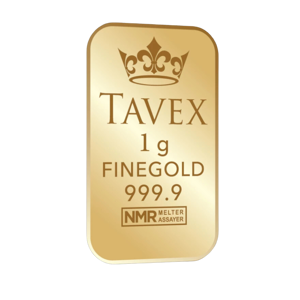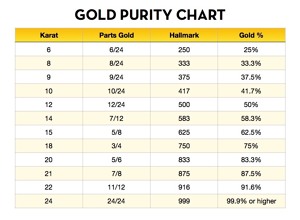Tavex uses cookies to ensure website functionality and improve your user experience. Collecting data from cookies helps us provide the best experience for you, keeps your account secure and allows us to personalise advert content. You can find out more in our cookie policy.
Please select what cookies you allow us to use
Cookies are small files of letters and digits downloaded and saved on your computer or another device (for instance, a mobile phone, a tablet) and saved in your browser while you visit a website. They can be used to track the pages you visit on the website, save the information you enter or remember your preferences such as language settings as long as you’re browsing the website.
| Cookie name | Cookie description | Cookie duration |
|---|---|---|
| tavex_cookie_consent | Stores cookie consent options selected | 60 weeks |
| tavex_customer | Tavex customer ID | 30 days |
| wp-wpml_current_language | Stores selected language | 1 day |
| AWSALB | AWS ALB sticky session cookie | 6 days |
| AWSALBCORS | AWS ALB sticky session cookie | 6 days |
| NO_CACHE | Used to disable page caching | 1 day |
| PHPSESSID | Identifier for PHP session | Session |
| latest_news | Helps to keep notifications relevant by storing the latest news shown | 29 days |
| latest_news_flash | Helps to keep notifications relevant by storing the latest news shown | 29 days |
| tavex_recently_viewed_products | List of recently viewed products | 1 day |
| tavex_compare_amount | Number of items in product comparison view | 1 day |
| Cookie name | Cookie description | Cookie duration |
|---|---|---|
| chart-widget-tab-*-*-* | Remembers last chart options (i.e currency, time period, etc) | 29 days |
| archive_layout | Stores selected product layout on category pages | 1 day |
| Cookie name | Cookie description | Cookie duration |
|---|---|---|
| cartstack.com-* | Used for tracking abandoned shopping carts | 1 year |
| _omappvp | Used by OptinMonster for determining new vs. returning visitors. Expires in 11 years | 11 years |
| _omappvs | Used by OptinMonster for determining when a new visitor becomes a returning visitor | Session |
| om* | Used by OptinMonster to track interactions with campaigns | Persistent |
| Cookie name | Cookie description | Cookie duration |
|---|---|---|
| _ga | Used to distinguish users | 2 years |
| _gid | Used to distinguish users | 24 hours |
| _ga_* | Used to persist session state | 2 years |
| _gac_* | Contains campaign related information | 90 days |
| _gat_gtag_* | Used to throttle request rate | 1 minute |
| _fbc | Facebook advertisement cookie | 2 years |
| _fbp | Facebook cookie for distinguishing unique users | 2 years |
The ABCs of Gold: Understanding Common Gold Terminology

What Does “Pure Gold” Mean?

When purchasing gold jewellery, you have likely encountered the terms gold karat and gold purity. Gold purity refers to the amount of gold present in the jewelry, typically measured in karats. The karat value indicates the proportion of pure gold in the piece. A lower karat value signifies that more other metals have been mixed into the alloy, whereas a higher karat value means the piece contains more pure gold.
The highest carat content for gold is 24 karats – it stands for “pure” gold

A quick calculation reveals that 12 – karat gold is composed of 50% pure gold, with the remaining 50% made up of other metals added to the alloy to achieve the desired properties. Common elements used in gold alloys include copper, silver, nickel, palladium, and zinc.
Gold purity is also indicated by a numerical gold content stamp, which you may have noticed on gold items. The 999 stamp signifies that the alloy contains 99.9% gold, representing the highest gold content or the purest form of gold available.
The purest gold product in the world is the Royal Canadian Mint gold coin, which boasts a grade of 99.999% gold, making it an excellent investment.
Carat, Percentage and Stamp
| Karat Content | Shares of Gold | % Pure Gold | Stamp |
| 9k | 9/24 | 37.5 | 375 |
| 10k | 10/24 | 41.7 | 416/417 |
| 12k | 12/24 | 50 | 500 |
| 14k | 14/24 | 58.3 | 583/585 |
| 18k | 18/24 | 75 | 750 |
| 22k | 22/24 | 91.7 | 916/917 |
| 24k | 24/24 | 99.9 | 999 |
The stamp 585, commonly found on gold jewelry, indicates that the piece contains 58.5% pure gold and 41.5% other metals, which are added to enhance durability.
Why doesn’t pure gold have a content of 100%? It’s nearly impossible to eliminate all impurities that gold might come into contact with during the smelting process. Moreover, a small amount of other metals is necessary to give the alloy desirable properties, such as strength.
Pure gold is too soft for practical use in jewelry and coins, as it would easily lose its shape. This is why we don’t see the 999 stamp on jewelry or coins intended for everyday use.
What is Investment Gold?

Gold is a valuable asset often used to increase wealth and safeguard financial security. Investment gold is of high quality, boasting significant value. Gold investments allow individuals to invest in fine gold which historically has a record of appreciating over time.
Investing in gold can be done both physically and virtually. The virtual method, commonly referred to as “buying gold,” includes investing in gold ETFs (Exchange-Traded Funds) and mining-related indices.
Virtual Gold, Digital Gold, Physical Gold
- Virtual Gold or Paper Gold: This includes exchange-traded shares in gold funds (ETFs), shares in gold mines, or other intangible instruments. You can purchase gold online like any other asset class, without leaving your home. This term is common in trading where frequent buying and selling occur. Traders deal in financial instruments like ETFs and CFDs related to gold. The transactions are purely virtual; the gold does not change physical ownership, and you do not need to possess any physical gold.
- Digital Gold with Physical Backing: Gold bullion companies sell physical gold but store it on behalf of customers. Customers pay a monthly or annual fee for the gold dealer to store and safeguard the physical gold.
- Physical Investment Gold: This refers to actual gold coins and gold bars produced by gold refineries. Physical investment gold typically has very high purity and comes with a certificate from the refinery or mint. It represents an investment outside the digital system.
What is Jewellery Gold?

“Jewellery gold” refers to any gold that has lost its value in its original form, such as broken jewelry or industrial by-products. This type of gold is often sent to a refinery, where it is melted down and recycled into new products. In other words, any gold that is meant to be processed and/or reused can be classified as jewellery gold, and the base metal is not commonly pure gold.
What is ‘The Spread ‘and what is ‘The Current Price’ ?

Spread
In the financial industry, a spread can have several meanings. Most commonly, it refers to the difference between two prices, interest rates, or yields.
One of the most common definitions of a spread is the difference between the bid and ask price of a security or asset, such as a stock, bond, or commodity
This is known as the bid-ask spread.
Current Price
The current price is the present market value of a security, currency, or commodity that can be bought or sold immediately. In other words, it is the price at which sellers and buyers currently agree to trade an asset.


















